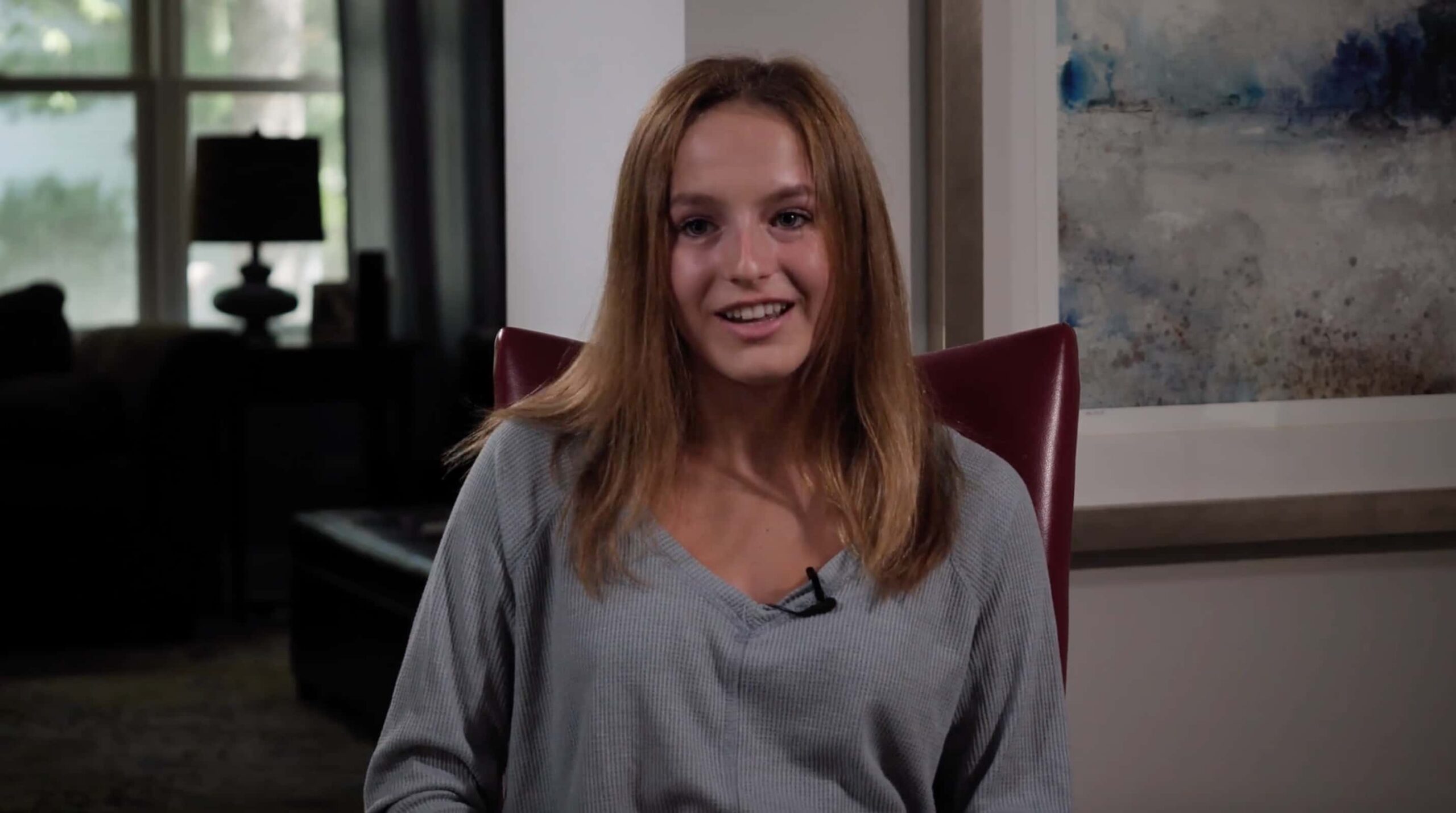For parents of a child struggling to learn in second grade and inexplicably falling further and further behind in math and reading, college was not even a twinkle on the horizon.
But, that’s no longer the case for the Ehrhardt family of Glenview, Ill. All-grown-up daughter, Delaney, is now heading to the University of Missouri this fall (2019) to study communications and journalism, thanks to some “fun tests” performed halfway through her second-grade school year and pairs of glasses prescribed by the Mind-Eye Institute in Northbrook, Ill.
Not that Delaney needs glasses to see. She tests out as having 20/20 eyesight. But the glasses – what Mind-Eye optometrists call “Brainwear™” – “make me feel more focused. My brain doesn’t seem to be just floating around,” Delaney says.
“Mind-Eye glasses are not intended to get patients to the clarity of 20/20 eyesight. In fact, only about six percent of our surrounding space comes from conscious attention to specific objects. Most environmental signals passing through our retinas emanate from peripheral space – the space that is all around us and that we are aware of beneath a conscious level,” explains Deborah Zelinsky, OD, founder and research director of the Mind-Eye Institute.
“Unfortunately, most eye professionals still rely on the gold-standard, 150-year-old eye testing system that addresses central eyesight by having a patient consciously look at nonmoving targets on a high-contrast eyechart across a darkened room. This standard testing typically does not emphasize peripheral retinal processing,” Dr. Zelinsky indicates.
The retina serves as a two-way portal between body functions and environmental stimuli. The right mix of filters, lenses and/or prisms can selectively stimulate light on the retina, helping patients redevelop visual skills during recovery from debilitating, life-altering symptoms of brain injuries; supporting development of new skills in patients with learning problems; and readjusting imbalances between spatial awareness in the visual and auditory systems, Dr. Zelinsky says.
Delaney, who is now wearing her fifth pair of therapeutic eyeglasses from the Mind-Eye Institute, concurs. She calls the glasses part of a “new wave of science,” which considers the interconnections between the eyes and ears.
“School children who have their eyes and ears tested separately are deemed fine when each system works well,” Dr. Zelinsky says. “However, during a school day, they need to have those two sensory systems working as a team, not separately. The linkage does not seem to be assessed in most children; the assumption is that if each sensory system functions, their combination is efficient.”
“I have been wearing my glasses in the classroom and at home doing school work because they help synchronize my sight and hearing,” Delaney says. “I tend to procrastinate; the glasses keep me on task.”
Of course, it wasn’t always that way. Dial back a decade to second grade when Delaney was stuck on the same 20 questions in a math quiz for two months and experienced difficulty in reading and retention.
“Words seemed to jumble up and fall off page. I would read as quickly as I could just to get through them,” she says. “I thought my problem was not being able to retain information in my brain. I was unable to keep up with everyone else.”
Turns out, though, Delaney’s learning problems were not simply a matter of retention and comprehension. She and her parents discovered the real reason following a first visit to the Mind-Eye Institute — one recommended by a family neighbor whose sons had been helped earlier by Dr. Zelinsky and her team.
“Dr. Zelinsky ran me through a whole series of tests. They seemed weird but fun. I considered them games – like reaching out and trying to touch a bell with your eyes closed,” Delaney recalls.
She is referring to Dr. Zelinsky’s patented Z-Bell Test℠. During the Z-Bell Test℠, a patient reaches out, with eyes closed, to touch a ringing bell. If the patient cannot do so, a Mind-Eye optometrist places different lenses, prisms and filters across the patient’s closed eyelids until an optimal combination allows the patient to find the bell immediately. Light still penetrates closed eyelids and activates parts of the brain not used for eyesight. With eyes closed, patients still must “visualize” surrounding space in order to locate the bell.
After this initial testing and evaluation, “Dr. Zelinsky told my parents that she had determined my problem,” Delaney remembers. “It was an imbalance between how my brain was processing sight and hearing. Dr. Zelinsky said I had difficulty visually applying what I was hearing in class. She then prescribed me a pair of glasses.
“Wearing the new Mind-Eye glasses changed night into day,” Delaney says. “I passed my math quiz, was reading assigned books – and retaining the information. Learning became enjoyable because I now understood the material as well as the other kids – and I was keeping up.”
Although now college-bound, Delaney remains a Mind-Eye patient, undergoing regular testing and obtaining new eyeglass prescriptions as her needs change.
She laughs. “I look forward to my appointments. The tests still seem like games, and, even today, I have trouble touching the bell.”

Success Stories, Processing Disorders
Glasses Rebalance Eyes, Ears; Now She’s College-Bound
Mind-Eye Institute’s ‘Fun’ Tests Pinpoint Source of Learning Problems
